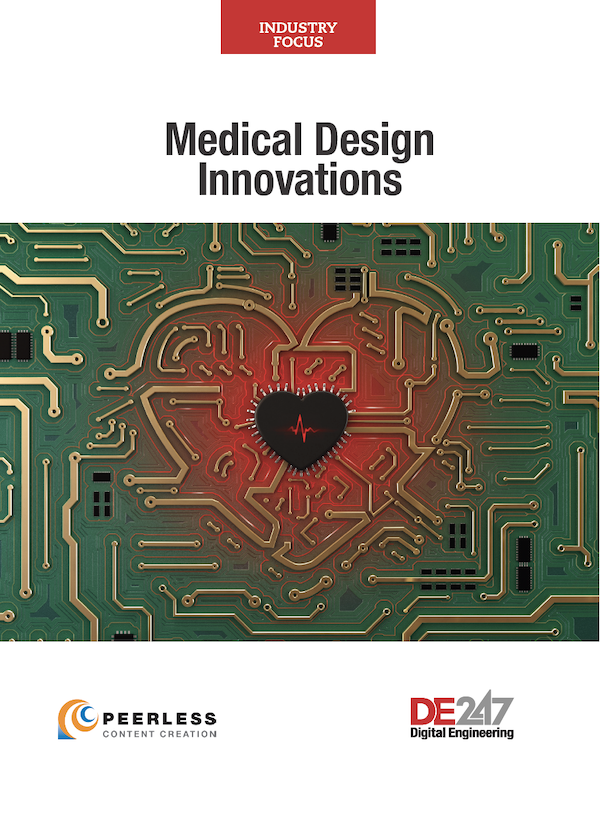
Increased use of home healthcare devices will require improvements in connective and user interface design.
June 17, 2021
There are real benefits to rigorously integrating human factors engineering —or usability design—into the development of patient or end user operated devices used in home-based healthcare and wearables for real-time monitoring and drug delivery.
Due to the potential limitations of the relatively unskilled end user operating unpredictably in an uncontrolled environment, bespoke design requirements will yield products that enhance capabilities and efficacy without raising use risk. This will in turn create more opportunities for growth within the distance care industry.
Patient-Operated Devices
It wasn’t long ago that patient-operated devices did nothing more than monitor high-level vital signs and deliver low-risk medications. The advent of available smart phone technology, coupled with dedicated software apps and possibly add-on USB-connected sensors and firmware, began what is proving to have sustainable growth in home-based diagnostics and simple procedures.
Without incurring much cost, someone could easily conduct routine sample collection and drug delivery, then upload data via internet or cellular connection to the professional caregiver.
Digital Health & Regulatory Mandates
At some point, the digital, or mobile health (mHealth), industry struck a roadblock with regulatory agencies such as the U.S. Food and Drug Administration (FDA), which were rightfully concerned over quality, reliability and accuracy issues associated with digital health products. Though medical devices must be developed with a level of rigor and quality required by regulatory bodies, the same is not true of consumer devices.
Because mHealth providers heavily leveraged the low-cost opportunity to piggyback on existing personal electronic devices (such as smartphones), this roadblock was a serious setback to an industry chomping at the bit to develop an impressive array of devices to help improve healthcare while reducing costs.
Additionally, there was a real risk that these early at-home solutions could present false negative diagnostic results, and encourage potentially deadly non-action by the patient. As a result, most caregivers preferred to continue prescribing routine in-office or hospital-based check-ups, which negated the intended value of distance care.
Therefore, most early, FDA-cleared digital health devices were relegated to being screening systems at best, and to prompt medical professionals to engage and run their own traditional tests before they provided an official diagnosis.
Moreover, there was no tangible reimbursement structure that offset the cost of purchasing these products, so they were treated as elective purchases by the patient, and severely limited the economic incentive for companies to invest in digital health devices.
Rise of Sophisticated Wearables
The result of this regulatory brush-off has been a proliferation of consumer products addressing fitness monitoring and digital coaching. Today’s consumer devices include some remarkably sophisticated wearables (usually smartwatches or e-bracelets) with embedded sensors that continuously monitor and download bio-data to phone-based apps, which are then uploaded onto cloud-based data sites for further scrutiny.
As impressive as these devices are today, they do not truly advance patient-operated healthcare beyond encouraging good lifestyle practices.
In the ensuing decade since these early attempts at mHealth industry advancements, smartphones have grown 10-fold in sophistication. Complex encryption algorithms and multiplexed connectivity to back-office supercomputers and onboard artificial intelligence (AI) infrastructure have enabled reliable and private data transfer to create big data, which are massive banks of globally compiled and processed, HIPAA-compliant healthcare information.
These ever-growing databases are seeking to provide diagnostics based on historic, DNA-tagged patient outcomes, then provide predictive prognoses and individualized treatment guidelines.
Couple this technology onslaught with heavy public and political criticism over what was deemed over-conservative oversight by regulatory agencies, crippling digital health innovation and advancement of healthcare paradigms to improve patient outcomes at lower cost and burden to an ever-shrinking clinical workforce.
The challenges faced by the digital health industry over the last decade have propagated a few government initiatives (bit.ly/3aHJfVm) to encourage innovation in this space.
In particular, wearable devices have led this advancement, possibly because the need for continuous operation (such as the Dexcom G6) on the patient for monitoring and/or drug delivery (an insulin pump).
Even Fitbit (bit.ly/3eCQn6G) and Apple (apple.co/32SZlr3) now have FDA-cleared smart watches that continuously monitor heart activity through electrocardiograms and early detection of atrial fibrillation. These mass-produced products are the pioneers that are building confidence that a product-centric convergence has arrived between the consumer and medical device industries.
Telemedicine’s Role
In a show of support for distance care, and perhaps catalyzed by the recent COVID-19 pandemic, many healthcare providers now offer telemedicine in their coverage plan offerings. These portals bring the virtual clinician into the home to troubleshoot and talk us through challenges while also providing medical knowledge.
Never before has it been more convenient to conduct routine tasks from the privacy, comfort and safety of one’s own living room. This distance-care phenomenon is accelerating in popularity as today’s elderly patients are increasingly less tech-averse, comfortable with wireless interoperability and express a desire to be better informed and involved with their healthcare.
This emerging mindset demands a clearer understanding of the disease state, individual prognosis and sense of control of one’s own future, while potentially reducing costs via self-care opportunities and early diagnosis of serious emerging illnesses through smarter and continuous monitoring of symptoms.
Unfortunately, digital healthcare isn’t a complete win-win proposition for patients and the healthcare industry. While clinicians are rigorously trained to precisely follow protocols in a clean, well-controlled environment, patients operating out of their home or on the road have no such routines or controls in place.
Habits such as smoking, unpredictable discipline, and hygiene coupled with personal comorbidities add to the challenges presented to device designers. Conducting usability studies that characterize the personas of these intended end users prior to initiating the design process can go a long way to developing the appropriate device to minimize these use-related issues.
Therefore, these patient-operated products can no longer be retroactive adaptations of clinical devices originally intended for highly skilled and trained clinicians—they must be designed from the ground up for patient operation in the expected distance-care environment.
Performance Initiatives
Beyond operational performance, punctuality and accuracy of operation is essential to support the elevated sophistication of the technology. Device companies must be able to verify if the user is following protocol or falsifying input data, exchanging samples with others, modifying collection or procedural parameters such as before or after meals, time of day, before or after exercise.
The latest biometric authentication technologies use finger or palm-printing, retina scanning and facial recognition to create a HIPAA-compliant digital signature or identity. Then the patient can be digitally identified via real-time video-tracking of the controlled procedure while also complying with privacy laws.
This digital authentication process can detect “off-label” use and appropriate intervention while disqualifying falsified data. Ultimately the system is intended to encourage strict protocol adherence, verifying to the caregiver and insurance provider that these remote procedures are carried out accurately and that data from compliant patients can be relied on to inform optimization of ongoing procedural parameters at every interval.
This big data-informed AI has potential to enable a far more effective healthcare strategy, known as customized medicine (bit.ly/3xu7d0o), than that of traditional generic dosing guidelines.
User-centered innovations have enabled even super-sensitive drug-delivery (wearable insulin pumps) and critical care systems (home hemodialysis) to be performed by the patient. Remarkably accurate and self-calibrating and optimizing sensors guide largely automated devices to do most of the work for the patient. The smart operational architecture mitigates use-risk while providing real-time data processing and trending infographic uploads to the caregiver for further interventional consideration.
User interface designs include consumer product-like touchscreens with full gesture control, voice-to-text and commands such as Amazon’s Alexa and Google’s Nest. Remote and robotic intervention is being considered for these devices, and is becoming more common in the automotive and industrial spaces.
These new control systems have deftly sidestepped the dependence on laborious, fault-prone conventional paradigms offered by computers, keyboards and smartphones. It has never been easier for the patient to confidently assume control of many activities that elevate the quality of their own healthcare, while simultaneously freeing up tomorrow’s clinicians to intervene only when human interaction and decision-making will suffice.
Though there is a process involved, the medical device community can gain trust and confidence with the distance-care model by extending reimbursement coverage to provide economic incentives, encouraging device companies to continue investing in further development of increasingly sophisticated home health and wearable products.
By improving simplicity, accuracy, capability and safety enable patients to comply with and advance the level of their own care and education. All sides win when early intervention can prevent, reduce or manage catastrophic illness at lower cost.
Philip Remedios is chief financial officer and director of Design & Development, BlackHägen (www.blackhagendesign.com).

Subscribe to our FREE magazine, FREE email newsletters or both!





